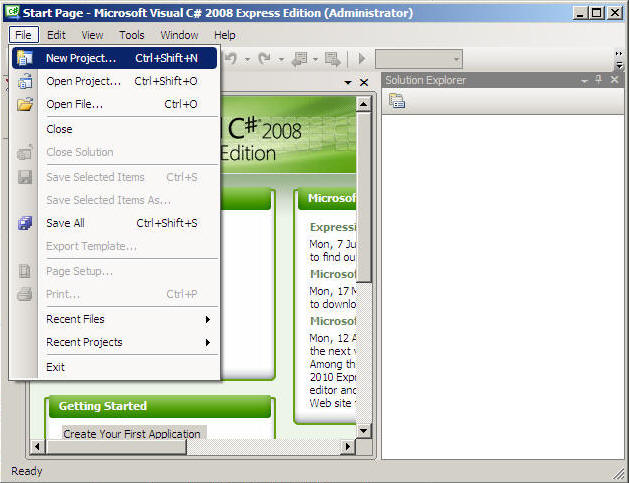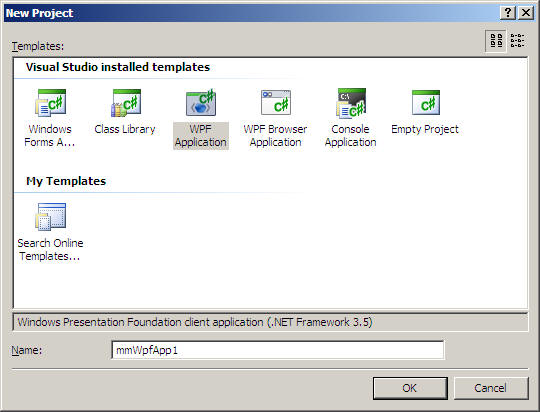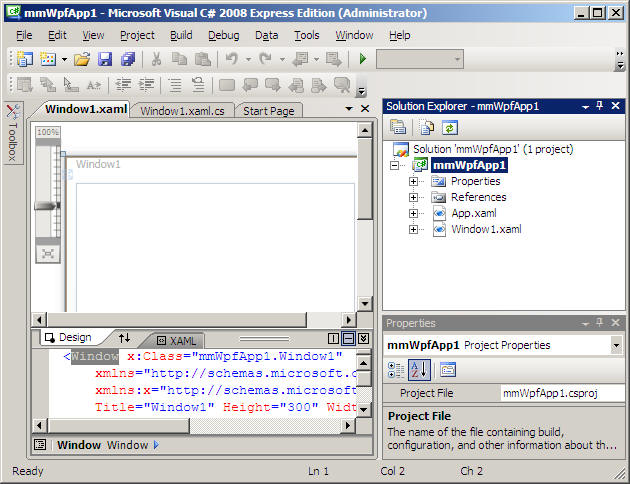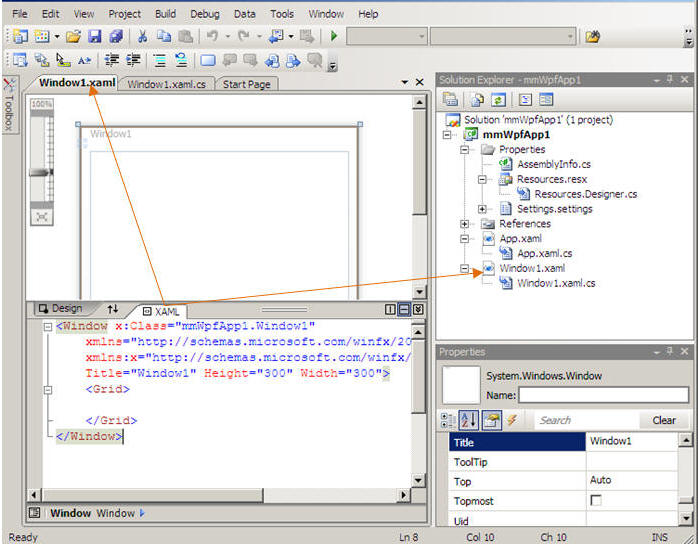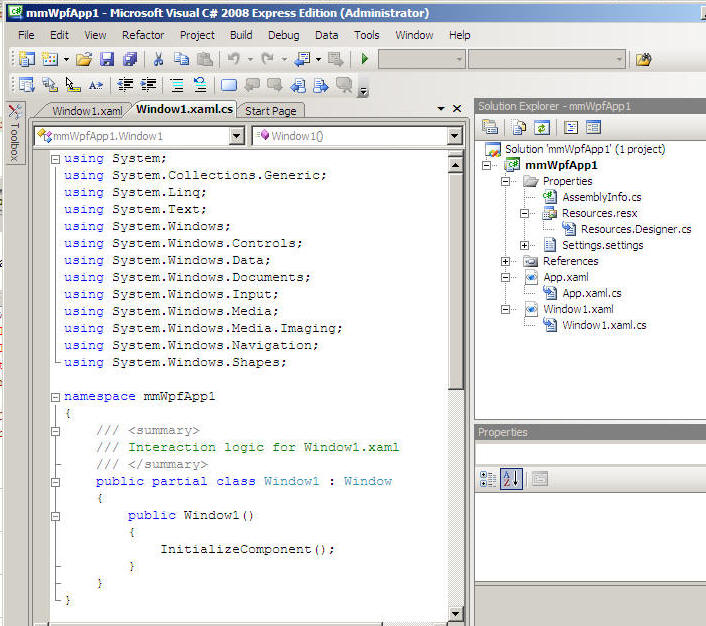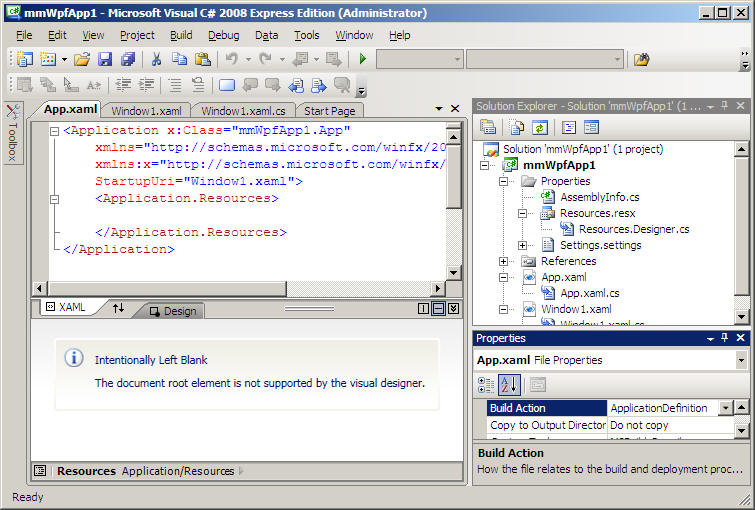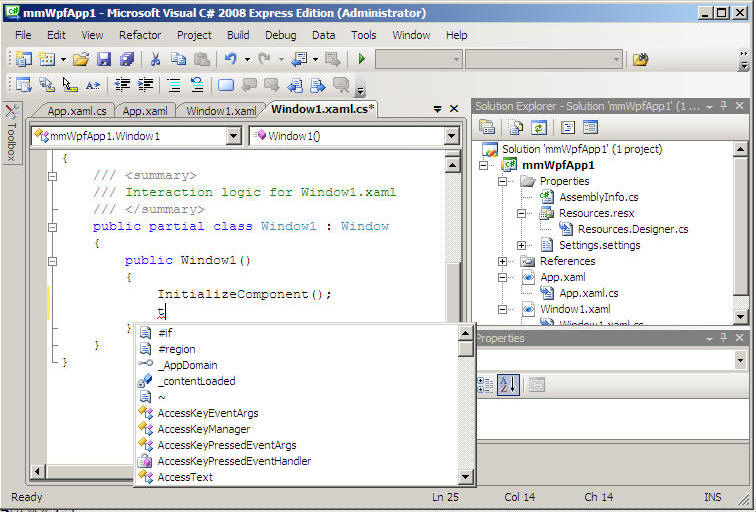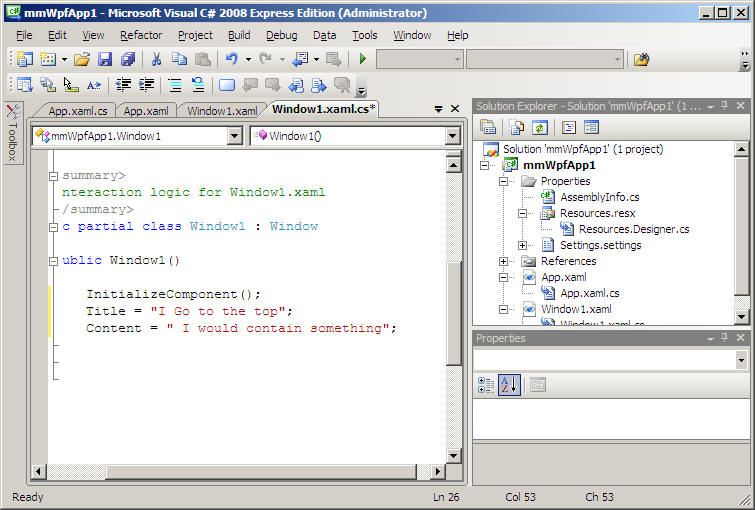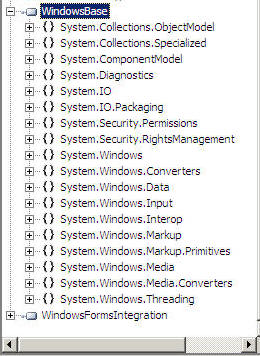This image is being updated.
FAQ Of WPF
- WPF : Windows Presentation Foundation (WPF) is a UI framework supporting types of applications.
- Windows Application.:
- Navigation Application
- XAML Browser Application
- that creates rich, interactive client applications. The WPF development platform supports a broad set of application development features, including an application model, resources, controls, graphics, layout, data binding, documents, and security. It is a subset of the .NET Framework, so if you have previously built applications with the .NET Framework using ASP.NET or Windows Forms, the programming experience should be familiar. WPF uses the Extensible Application Markup Language (XAML) to provide a declarative model for application programming. This section has topics that introduce and help you get started with WPF.
Step: 1
Below is the quick look of window's pane to begin with.
Let us Look at the default XAML Code
bare-bone xaml
<Window x:Class="mmWpfApp1.Window1"
xmlns="http://schemas.microsoft.com/winfx/2006/xaml/presentation"
xmlns:x="http://schemas.microsoft.com/winfx/2006/xaml"
Title="Window1" Height="300" Width="300">
<Grid>
</Grid>
</Window>
Windows Code representations of designer pane
App.xaml
Step: 2 adding codes using intelligent prompt
If you switch to design view, since no controls are added at this point, and only code pane has notations; therfoere the design pane as well as others will remain unchanged.
Resource Designer ( auto generated)
References folder contains all the APIs need to run WPF application. The reference condulate Window
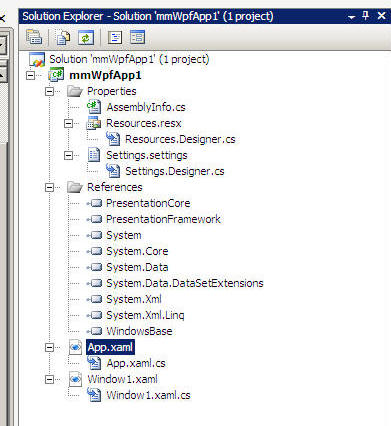
Step: 3 Runtime views, Build and then run the application by clicking the green arrow
